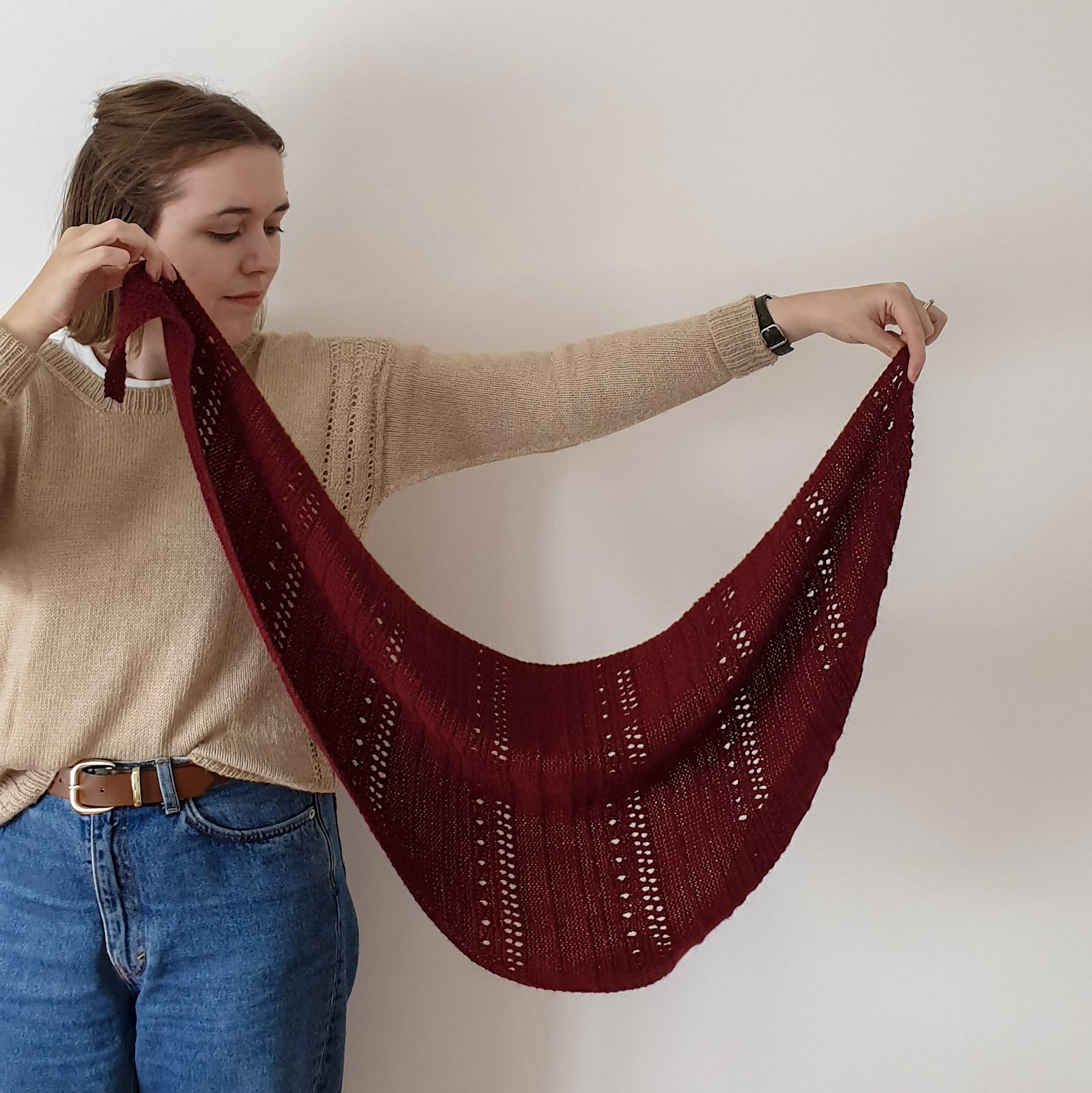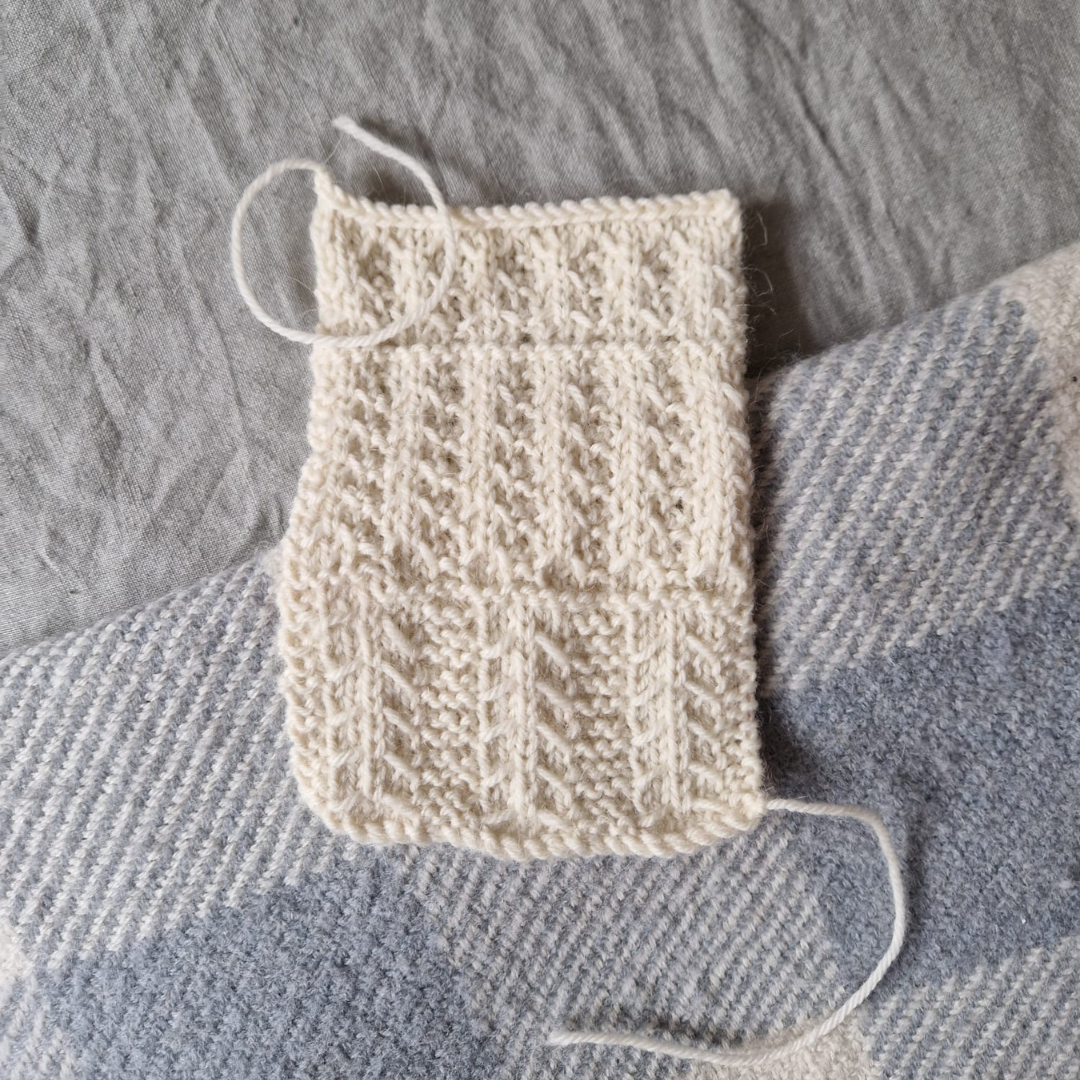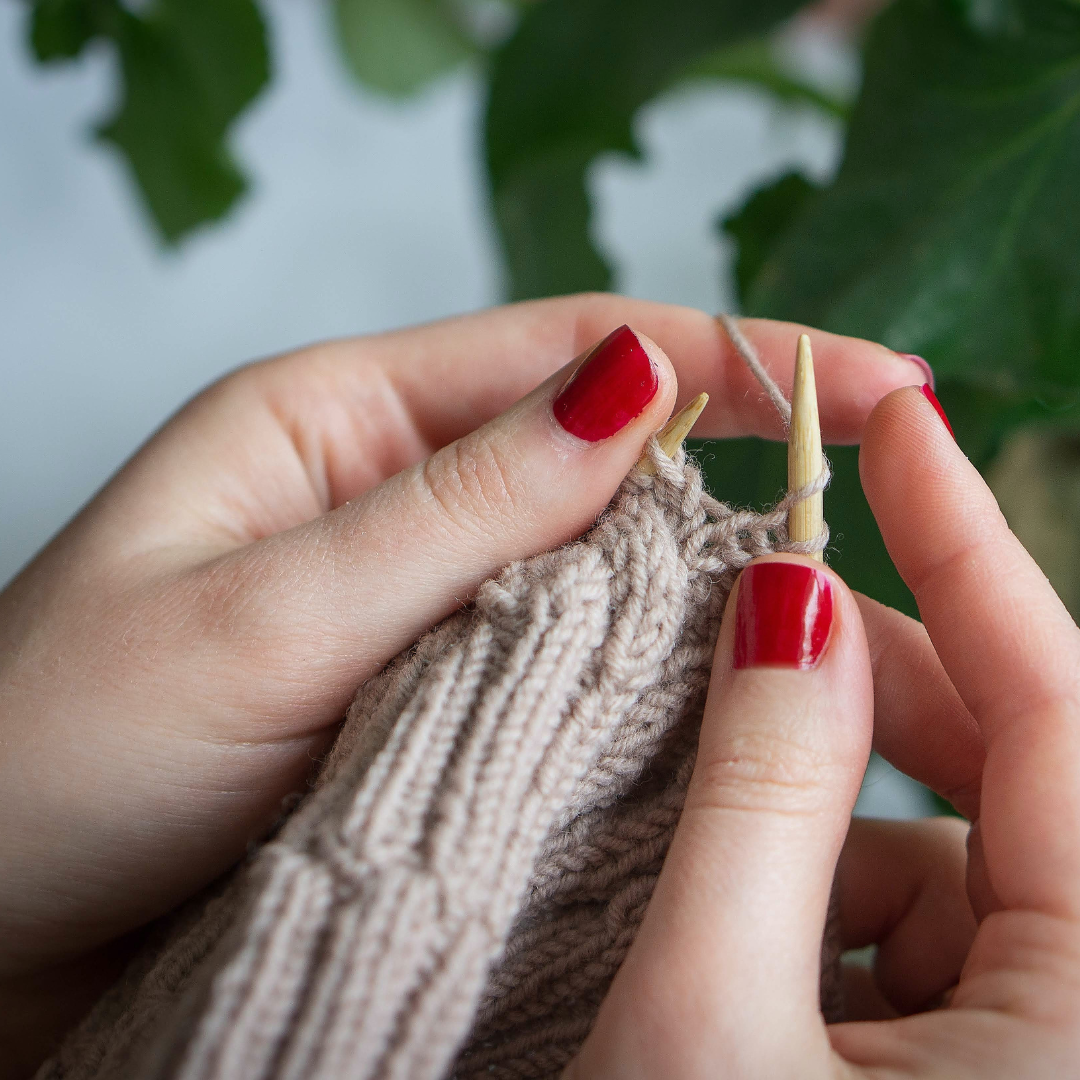How I Manage My Time as a Part-Time Knitting Pattern Designer
Trying to fit knitting pattern design into a busy life can sometimes feel almost impossible. Believe me - I know!
As a work-at-home parent, with my toddler home most of the week, there often doesn’t seem to be much spare time in between all of the food preparation, post-meal cleanups and trips to the playground.
But with a bit of intentionality and a whole lot of compromise, I’ve found a way to make it work for me, and that’s what I’m sharing with you today.
By the end of this blog post, you will have gotten clear on what you want to achieve in the coming months and you’ll have a plan to achieve it by breaking your goals down into weekly and daily tasks.
Make sure you read to the end, as I also share a bonus tip for getting more done in the time you have!
Disclaimer: This blog post is all about how I manage my time as a knitting pattern designer and knitwear teacher with a young toddler, so the specifics of how and when I do things may not apply directly to you; however, I will provide you with ways to adapt this to suit your own lifestyle.
Image description: photo of a desk with a calendar and clock with the words “How I Manage My Time as a Part-Time Knitting Pattern Designer” on top of it
How I Manage My Time as a Knitting Pattern Designer and Mum
Flexible Weekly Schedule
My life and schedule change all the time as my toddler grows up and unexpected life events happen. Whenever my circumstances change for an extended period, I adapt my schedule to ensure that I’m being sensible about what I can feasibly get done in this season of my life.
To do this, I look at my average week and plan what my schedule would look like if all went to plan. Of course, if you’re anything like me, things don’t often go to plan, but I try my best to follow it whilst allowing for flexibility. Having this rough structure helps me to keep making progress in the areas of my business that are a priority.
My Current Schedule
Work Days
Right now, my son is at nursery two days a week, so these are my work days. Because my work involves both designing knitting patterns, as well as teaching about knitting pattern design, I dedicate one day to design and one day to teaching. This allows me to give each of them my undivided attention.
I try to be incredibly focused and diligent on these days, as they are my rare opportunities to get into flow and work on something more in-depth. I also plan my meetings and the live Q&As with my students on these days so we won’t be interrupted.
Inevitably, children get sick, so my husband and I have an agreement that if our son is sick on one of my two work days, he will stay home with him unless he needs to travel for work. If he is travelling, I will take the day off instead and work one day on the weekend.
Non-Work Days
I try to only work on weekends or evenings if I absolutely have to. This is one of the boundaries I set up since our son was born, as quality family time is essential to me, and I tend to overwork and burn out.
On the remaining three work days that my son is home with me, I used to work during nap times up until recently. This meant that I would do all of my errands and housework whilst he was awake so that I was home and could sit down at my laptop as soon as he fell asleep.
This was necessary for this season of my life, but I found it challenging. The day felt relentless, and without much time to rest. It was also very frustrating when nap time didn’t go to plan, as I couldn’t get the work I planned done - triggering for a recovering control freak like myself!
Thankfully, I am now able to work with an assistant who has helped me so much with all of the day-to-day tasks I used to do whilst Nico was napping. This allows me to do very little work on the days my son is home with me: just checking on urgent emails and my project manager, Asana.
It’s an absolute privilege to be able to hire an assistant for a few hours a week, and one that I don’t take for granted. I love that I can now stay present when I’m in either of my roles: mum and business owner. It’s a lot better for my mental health.
SAMPLE Knitting
As much as I love to knit, I mainly use sample knitters for my patterns these days so that I’m not working 24/7 and can sustainably increase my output. Again, this is a real privilege as it can be a relatively large expense, but having worked with and without them, I find it a worthwhile investment.
Sometimes, I need to knit my own samples because I’m working to a tight deadline or my sample knitter is already booked up. On those occasions, I do knit on weekends and evenings to get the samples done in time.
What does your schedule look like?
Your life and commitments probably look different to mine, so I want you to look at your average week and see what time you have available every week to dedicate to knitting pattern design.
Whether you have a whole week, a day or just an hour available to you, it doesn’t matter. What matters is committing to spending that time on your design work every single week. That way, you will always be making progress.
If you tend to work yourself into burnout, it can also be helpful to look at your non-negotiables. Maybe you’re like me and don’t want to work on weekends, or perhaps you have other boundaries you need to set.
Once you have your flexible weekly schedule in place, write it down somewhere - ideally, in your calendar, so that you can hold yourself accountable.
Image description: photo of a woman planning with a diary open, calendar, and laptop. The text reads: How I Manage My Time as a Part-Time Knitting Pattern Designer
Annual Goals
These days, I am a big fan of goals to help me stay on track. Without them, I feel like I work aimlessly on tasks that, when it comes down to it, aren’t my true priority, and as a result, I end up spreading myself too thin. Prioritising tasks related to my goals helps me ensure they actually get done and won’t be crowded out by less important tasks.
I typically set 2-3 goals per quarter, which ends up being 8-12 goals per year. Many aren’t work-related, such as sticking to my monthly budget or making my son a quilt, but at least one is work-related per quarter.
Like New Year’s Resolutions, it can be easy to set and forget your goals. That has been my typical pattern until this year. Now, I have a weekly and daily planning routine to keep my goals top of mind and plan my day-to-day tasks accordingly. It has made a huge difference!
One of my goals is to design and release a knitting pattern every month in 2023.
…I’m scared even to put it out there with you all, as it will be a big challenge, for sure! But I think it will be a great way to systematically grow my pattern catalogue, and I know I will learn lots more about knitting pattern design that I can share with you all here in the process.
Weekly Planning
Every Sunday, I try to plan the coming week, both for my work and personal life. I take note of any commitments in my calendar, any looming deadlines, and of course, tasks that will get me closer to achieving my quarterly goals. Then, I slot them all into my flexible weekly schedule.
I tend to prioritise completing no more than three main tasks for the week, usually based on my goals and any projects I need to work on. Of course, I often complete more than those tasks, but by prioritising the ones connected to my “big picture” goals, I make sure that they get done first, and then I use my remaining time on other things.
So, for example, if I’m planning on releasing a new knitting pattern every month next year, that means that I need to be prioritising design-related tasks every single week so that I’m consistently making progress towards achieving that goal.
Daily Planning
Every evening, I reflect on my weekly plan to remind myself of what I am working on the following day and identify at most three key tasks I would like to prioritise.
On the days that my son is at nursery, most of my priority tasks will be work-related; however, if I’m staying home with him that day, they might be related to something else entirely. Whatever the day, my priority tasks tend to be related to my weekly and annual goals or a big commitment I have that day.
I always prioritise completing those three tasks before I move on to anything else. Now, when I’m working, it’s easy to work my way down my priority list, but if I’m at home with my toddler, my days can be much more unpredictable as I’m focused on meeting his needs. I often jam my tasks into the small gaps of free time I have when he’s asleep or playing independently.
What would you like to achieve next year?
I know that goal setting doesn’t appeal to everyone, but I want to encourage you to dream about next year. What would you love to do? What would you love to achieve? What steps would you need to take to get there?
To get started, try setting one design-related goal for 2023. You may want to design and release your first knitting pattern. Maybe you want to release a specific number of patterns this year, or you’d like to design your first pullover!
Whatever it is, write down this goal in a place where you will see it often. I tend to put mine in my notebook or on the notice board behind my desk.
Then, at the end of every week, start thinking about steps you can take this coming week to help you achieve your goal. Plan them into your flexible weekly schedule, and then use this to help you plan your days.
Remember: the steps you take towards meeting your design goal don’t have to be huge. If you only have a small amount of time you can dedicate to knitting pattern design per week, then just plan small tasks that work with the available time. If you have a lot of time, you can be more ambitious with your planning.
Image description: woman wearing rings and holding a pen is planning in her diary.
Bonus Tip: Systems!
As someone who is easily overwhelmed when juggling tasks and responsibilities, I rely heavily on systems to keep me from spiralling.
Whenever I have a task or a process that I repeat over and over in my work, such as designing a knitting pattern or even writing these blog posts, I typically follow the same workflow.
Having a step-by-step system that I follow every time helps to remove the guesswork from the process and makes me more efficient. I know what I’m working on and what I need to do next. It becomes routine. I particularly like that they help me stay focused on the task rather than getting side-tracked by something non-essential for the moment.
I keep these workflows in my project manager, Asana, and duplicate them whenever I embark on a new project. Then, I schedule each task in the workflow into my calendar, sometimes weeks and months in advance, so I can break the project into manageable chunks while still making consistent progress. All of this scheduling is heavily influenced by my flexible weekly calendar.
What could you systematise?
Even if you are just starting as a knitting pattern designer, there are things that you could potentially systematise. Perhaps it’s your posting schedule on social media or your knitting pattern design process.
Start by creating a system for the task or project you repeat the most. All it takes is listing the exact steps you repeat to complete the task, one by one, and storing it somewhere you can easily refer back to.
Then, when you next need to do that task, you can pull out your workflow and systematically work your way through it. You’ll be surprised how much more productive and organised you will be.
Conclusion: Stay Committed
It goes without saying that none of these tips or systems will work unless you do, so stay committed to your goals and start making consistent weekly steps toward achieving them. If you are super intentional with whatever time you have available, you will see progress.
I’ve shared one of my goals for 2023 with you. Now, it’s your turn! What will you be working towards next year? Share in the comments so that we can all cheer you on!























